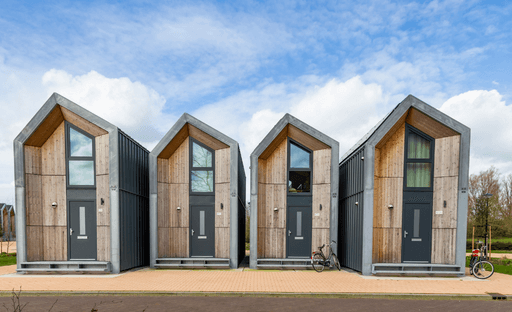Modern methods of construction sustainability
As the world continues to grapple with climate change, it is increasingly important for businesses and individuals alike to consider sustainable construction practices. This blog article will explore the benefits of modern methods of construction sustainability, from exploring innovative solutions for a greener future to harnessing technology to enhance building efficiency. We’ll also discuss strategies for reducing environmental impact in construction and integrating sustainability into modern projects. By taking these measures, we can help ensure that our buildings are as efficient and eco-friendly as possible while still meeting all safety requirements. We want to talk about Modern methods of construction sustainability!
The construction industry is one of the most resource-intensive industries in the world. It consumes large amounts of energy, water and raw materials to build our homes, offices and other structures. As such, it has a major impact on our environment and climate change. To reduce this impact, many modern methods of construction are being developed with sustainability in mind.
One example is green building design which focuses on reducing energy use through efficient insulation systems, natural lighting solutions and renewable energy sources like solar panels or wind turbines. Green buildings also often feature rainwater harvesting systems for irrigation or greywater recycling for flushing toilets or washing machines. These measures can significantly reduce the number of resources consumed by a building over its lifetime while still providing comfortable living conditions inside it.
Another approach to sustainable construction is modular building technology which involves prefabricating components offsite before they are assembled at the final location using minimal labour input compared to traditional construction methods such as bricklaying or carpentry workmanship. This reduces waste generated during production as well as time spent on site since all parts have already been pre-made according to exact specifications beforehand. Additionally, modular buildings tend to be more durable than their traditionally built counterparts due to better quality control during manufacturing processes.
Finally, 3D printing technology has recently emerged as an innovative way of creating complex architectural designs with less material consumption than conventional techniques would require. By using computer-aided design software (CAD), architects can create intricate shapes that would otherwise be impossible without 3D printing technology.
Examining the Benefits of Sustainable Construction Practices

As the construction industry continues to evolve, sustainable construction practices are becoming increasingly important. Examining the benefits of these practices can help us understand why they are essential for a successful and efficient building process.
One of the most significant advantages of sustainable construction is that it reduces environmental impact. By utilizing materials with low embodied energy and carbon footprints, such as recycled steel or timber from sustainably managed forests, we can minimize our contribution to climate change while still creating high-quality buildings that will last for generations. Additionally, by using renewable sources like solar panels or wind turbines during the building process, we can reduce our reliance on non-renewable resources like fossil fuels while also reducing emissions associated with traditional power generation methods.
Sustainable construction also has economic benefits in addition to its environmental advantages; by investing in green technologies such as geothermal heating systems or rainwater harvesting systems during the initial stages of development, businesses and homeowners alike may be able to save money over time through reduced energy costs and water bills respectively. Furthermore, when done correctly sustainable buildings often require less maintenance than their conventional counterparts due to their increased durability – this means fewer repairs down the line which translates into further cost savings over time!
Finally – but certainly not least – there are social benefits associated with implementing sustainable construction practices too; healthier indoor air quality resulting from improved ventilation systems helps create a more comfortable living environment for occupants while simultaneously reducing exposure risks related to pollutants found in many traditional homes (such as mould spores). In addition, better insulation techniques used during development lead directly towards improved thermal comfort levels within dwellings which helps keep residents warm throughout winter months without relying heavily on costly heating solutions!
Overall it’s clear that examining the potential benefits offered by modern methods of sustainability is an important step towards ensuring future success within today’s ever-changing world – both economically & environmentally speaking!
Exploring Innovative Solutions for a Greener Future

As the world continues to grapple with climate change, it is becoming increasingly important for us to explore innovative solutions that will help create a greener future. In the construction industry, this means finding ways to reduce our environmental footprint while still providing quality buildings and infrastructure. One of the most promising methods of achieving sustainability in modern construction is through green building materials and practices.
Green building materials are those that are made from renewable or recycled sources, such as bamboo or recycled plastic. These materials can be used in place of traditional concrete and steel structures, reducing energy consumption during production and transportation while also improving air quality by eliminating harmful emissions associated with manufacturing processes. Additionally, green building practices involve using energy-efficient appliances and lighting systems as well as utilizing natural ventilation techniques instead of relying on air conditioning units which consume large amounts of electricity over time.
In addition to these sustainable solutions for modern construction projects, there are other measures we can take towards creating a greener future including investing in renewable energy sources like solar power or wind turbines; implementing water conservation strategies; encouraging carpooling among employees; introducing waste management programs at job sites; promoting urban agriculture initiatives within communities; developing eco-friendly landscaping designs around new builds; establishing recycling centres near job sites so workers have easy access to them throughout their workday – all these efforts contribute towards making our planet more sustainable!
Harnessing Technology to Enhance Building Efficiency
The construction industry is embracing technology to enhance building efficiency and reduce environmental impact. Through the use of modern methods, such as Building Information Modeling (BIM) and prefabrication, the industry is able to create more efficient buildings that are better for both people and the planet.
BIM allows architects and engineers to design a building virtually before it’s constructed in real life. This helps them identify potential issues early on in the process, reducing costly mistakes later down the line. It also enables them to optimize energy consumption by creating an accurate model of how different materials will interact with each other within a structure.
Prefabrication involves constructing parts or entire sections of a building offsite using advanced manufacturing techniques like 3D printing or robotic assembly lines. This reduces waste during construction while ensuring higher quality control standards than traditional methods can provide due to its repeatability factor – meaning fewer errors occur throughout production processes when compared with manual labour-based approaches prone to human error over time due to fatigue or lack of focus etc.
These technologies have enabled us not only to save money but also significantly reduce our carbon footprint by decreasing material usage through improved design accuracy; optimizing energy consumption; eliminating unnecessary transportation costs associated with transporting materials from one place to another; as well as reducing waste generated during construction activities – all leading towards greater sustainability goals!
Strategies for Reducing Environmental Impact in Construction
Construction projects have a significant environmental impact, and it is essential to consider ways of reducing this impact. There are several strategies that can be implemented to reduce the environmental footprint of construction activities.
One way to reduce the environmental impact of construction is by using sustainable materials. This includes using recycled or renewable materials wherever possible, such as wood from sustainably managed forests and steel made from scrap metal. Additionally, choosing energy-efficient building systems such as insulated concrete forms (ICFs) can help minimize energy consumption during the operation and maintenance phases.
Another strategy for reducing the environmental impacts of construction is through efficient waste management practices on site. This involves implementing measures such as sorting recyclable materials for reuse or repurposing them in other parts of the project instead of disposing of them offsite; reusing packaging material; avoiding over-ordering supplies; and minimizing water use throughout all stages of construction activity where possible.
Finally, investing in green technologies like solar panels or wind turbines can help offset some emissions associated with traditional power sources used during a project’s lifecycle while also providing long-term cost savings benefits for owners/operators down the line due to reduced utility bills over time compared with conventional alternatives.
In conclusion, there are many strategies available that enable us to reduce our overall environmental footprint when constructing buildings – from selecting sustainable materials through efficient waste management practices on site right up until investing in green technologies at the completion stage – which should be considered if we want our built environment not only look good but also do well too!
Integrating Sustainability into Modern Construction Projects
Modern construction projects are increasingly being designed with sustainability in mind. Integrating sustainable practices into the design and building process is essential for reducing environmental impact, improving energy efficiency, and creating a healthier living environment.
The most effective way to integrate sustainability into modern construction projects is through the use of green building materials. These materials are made from renewable resources such as bamboo, cork, straw bale insulation and recycled plastic products that can be used instead of traditional wood or concrete structures. Additionally, these materials often require less energy to produce than their non-renewable counterparts which further reduces their environmental footprint.
Another important aspect of integrating sustainability into modern construction projects is utilizing efficient technologies such as solar panels or wind turbines to generate electricity onsite rather than relying solely on grid power sources. This helps reduce emissions and provides an additional source of income for developers by selling excess electricity back onto the grid at a profit margin when demand exceeds supply during peak hours.
Finally, incorporating water conservation strategies like rainwater harvesting systems or greywater recycling systems can help reduce water consumption while still providing adequate levels of sanitation for occupants within buildings constructed using sustainable methods.






